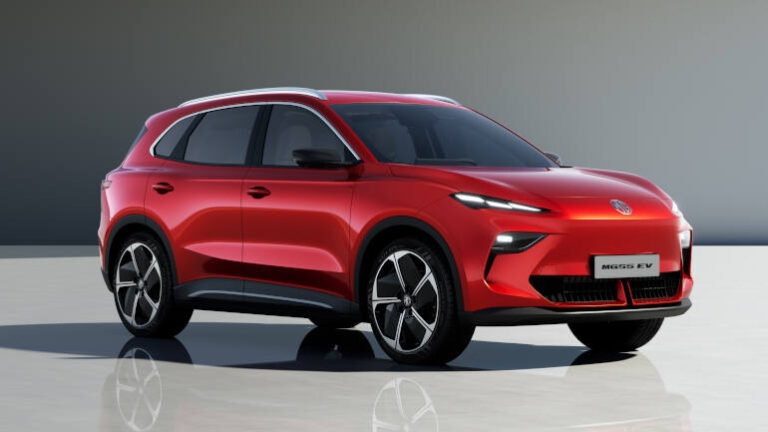
If you’ve decided your next car will be electric, congratulations – you’re joining a wave of Australian drivers moving away from petrol. For many buyers, though, the decision to go EV is still a mix of enthusiasm and nerves: new charge behaviours, different cabin layouts, and a market increasingly populated by both legacy marques and new Chinese entrants. This guide is written for Australians who want a practical, affordable first electric car: models that balance everyday usability, value and the dealer and charging support you’ll need in real life.
A quick note on cost and comfort
Electric vehicles generally still carry a price premium over equivalent combustion cars, but the gap is narrowing as more models arrive and competition grows. Total cost of ownership can tip in the EV’s favour over several years thanks to lower running and servicing costs, but you should factor in your home-charging setup, access to public chargers and the likely depreciation of the model you choose.
Also think about what kind of cabin and driving experience you want. Some EVs have very familiar dashboards – physical knobs, mirrors and a driver display – while others push the “minimalist” envelope with oversized central screens and camera-based mirrors. If you’re switching from a conventional car, the latter can feel radical at first, but most drivers adapt quickly.
What to look for in a first EV
- Real-world range: official WLTP or ADR figures are a good starting point, but expect lower range in colder weather, with roof racks, or when towing.
- Charging capability: AC charging for home and faster DC charging for longer trips. Consider the maximum DC charge rate if you travel interstate regularly.
- Dealer and service network: more dealers usually makes ownership simpler.
- Warranty and battery coverage: most manufacturers offer multi-year battery warranties that provide peace of mind.
- Practicality: boot space, rear-seat room and roof loading matter if you have family or gear.
Models worth considering
MG S5 – pragmatic, easy to live with
The MG S5 has been pitched at buyers after an affordable, no-fuss small SUV. It’s designed to be familiar to drivers making the switch: conventional door handles, clear instrument clusters and physical controls that ease the transition from ICE vehicles. Pricing in this segment starts from the low end of the market, making it one of the more accessible choices for first-time EV buyers.
Battery and range options generally cover the commuter spectrum – smaller batteries for short daily runs and larger packs if you need occasional longer trips. The S5’s ride comfort and simple human-centred interface make it an appealing everyday driver. If you want a straightforward EV with broad dealer coverage, this is a sensible first pick.
Kia EV3 – compact, practical and locally tuned
The Kia EV3 is a compact SUV that’s aimed at buyers who want roomy packaging without excess bulk. Its cabin is surprisingly spacious for a car of around 4.3 metres, with practical storage and good headroom. Kia’s growing focus on local tuning and testing for Australian conditions means the EV3 is typically well dialled for our roads and drivers.
There are multiple battery grades, so you can choose between a shorter-range, lower-cost variant and longer-range options that better suit regional travel. If you like Kia’s approach – contemporary design but conventional controls and strong dealer backing – the EV3 is an attractive option.
MG4 – the affordable hatchback that feels like an EV first
The MG4 is a hatchback that has become a go-to recommendation for affordable EV buyers. It’s engaging to drive, compact for city life and offers a choice of batteries that cover everyday needs up to longer-range commuter requirements. Rear-wheel-drive versions deliver a different driving feel compared with front-drive trims, and MG’s extensive dealer network across Australia helps with ownership peace of mind.
If you’re replacing a small hatch or sedan and want an EV that’s simple to live with, the MG4 gives a compelling combination of price and practicality.
Zeekr X – premium feel without full luxury tax
Zeekr’s arrival on the Australian scene brings a more premium small hatch into reach for buyers willing to spend a touch more. The Zeekr X sits upmarket of the most affordable models and offers a refined interior, strong kit levels and composed driving manners. The brand benefits from being part of the same global group as established players, so buyers can expect solid engineering underpinnings.
Higher-spec versions, particularly dual-motor variants, offer brisk acceleration and higher performance, while still presenting as a compact, city-friendly package. If you want something that feels more premium but not ostentatious, the Zeekr X is worth test-driving.
Hyundai Ioniq 5 – spacious, future-proof and versatile
The Ioniq 5 remains one of the most accomplished mainstream EVs on sale in Australia. Its retro-inspired exterior hides a modern, flexible interior that is both roomy and ergonomically smart. Hyundai and Kia have been at the forefront of integrating hardware and software that can be updated and, when charging infrastructure catches up, handle higher charging rates – an important consideration for long-term ownership.
Battery sizes and performance options allow you to prioritise range or acceleration, and there are sportier N-badged variants for buyers who want performance as well as practicality. If you need a family-capable EV with a significant level of polish and a robust feature set, the Ioniq 5 remains a strong contender. For buyers seeking something slightly smaller or more conventional in appearance, Hyundai’s Kona Electric is a practical alternative.
Buying tips and practicalities
- Home charging: installing a dedicated AC wall box is the most convenient and cost-effective way to charge. Check electrician quotes and consider load limitations in older homes.
- Public charging: Australia’s DC fast-charger networks have expanded rapidly; Chargefox and other operators are building high-power corridors. Plan longer trips around confirmed charger locations.
- Test drives: spend time with the infotainment and driver interface. Make sure you’re comfortable with the controls, visibility and mirror/camera setup.
- Warranty and software updates: prefer brands that offer comprehensive battery warranties and over-the-air updates to keep the car current.
- Resale and model choice: popular models with large dealer footprints and strong brand recognition tend to hold value better in the early years.
Conclusion
Buying your first electric car in Australia is more straightforward than it was even a few years ago. The market now offers a wide range of choices – from very affordable hatchbacks and compact SUVs through to premium compact EVs and family-sized crossovers. For most first-time EV buyers, prioritising real-world range, charging convenience and dealer support will pay dividends. Take a few test drives, weigh the cost of home charging installation, and don’t be afraid to ask detailed questions about battery warranties and software updates. With careful planning, an EV can be a practical, efficient and enjoyable step away from petrol.
FAQs
Is now a good time to buy an EV in Australia?
Yes. The market is mature enough to offer a wide choice of models and price points, public charging infrastructure is expanding, and many manufacturers now provide better warranties and local support. Your decision should hinge on lifestyle: if most driving is local with access to home charging, an EV is an excellent choice.
How do I charge at home and how much will it cost?
Most EV owners install a dedicated AC home charger (a wall box) for convenience and safety. Charging costs depend on your electricity tariff; off-peak or dedicated EV rates can make home charging economical. Installation costs vary depending on your property and electrician fees.
What about long trips and fast charging?
Long-distance travel is practical in most of the populated parts of Australia thanks to expanding DC fast-charger networks. Plan routes in advance and allow for longer stops at charging stations. Faster DC charging capability in the car reduces dwell time on longer trips.
Are Chinese EV brands reliable?
Many Chinese EV brands now sell globally and have improved quality and technology, often offering strong value and features. Reliability can vary by model and how well the brand supports owners locally; check dealer reach, warranty terms and independent owner reviews.
Do EVs cost less to run than petrol cars?
Often, yes. EVs generally have lower energy costs per kilometre and fewer moving parts, which reduces servicing costs. However, initial purchase price, home charging installation and electricity tariffs will influence the overall cost comparison.
About EV Evolution
EV Evolution is the leading online platform dedicated to Australian electric vehicle owners and enthusiasts. We foster a vibrant community, delivering essential EV news and insights, and enhancing user engagement through our innovative, AI-powered chatbot for dynamic discussions. Our mission is to empower Australian electric vehicle owners and enthusiasts by fostering a vibrant, AI-driven online community that connects, informs, and advances the nation’s electric vehicle landscape.




